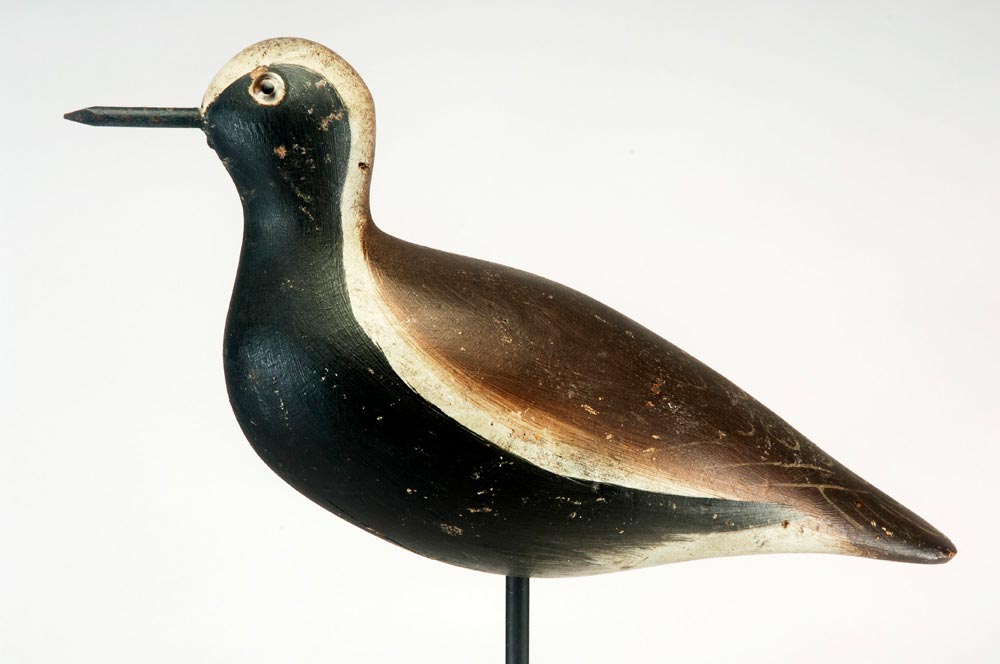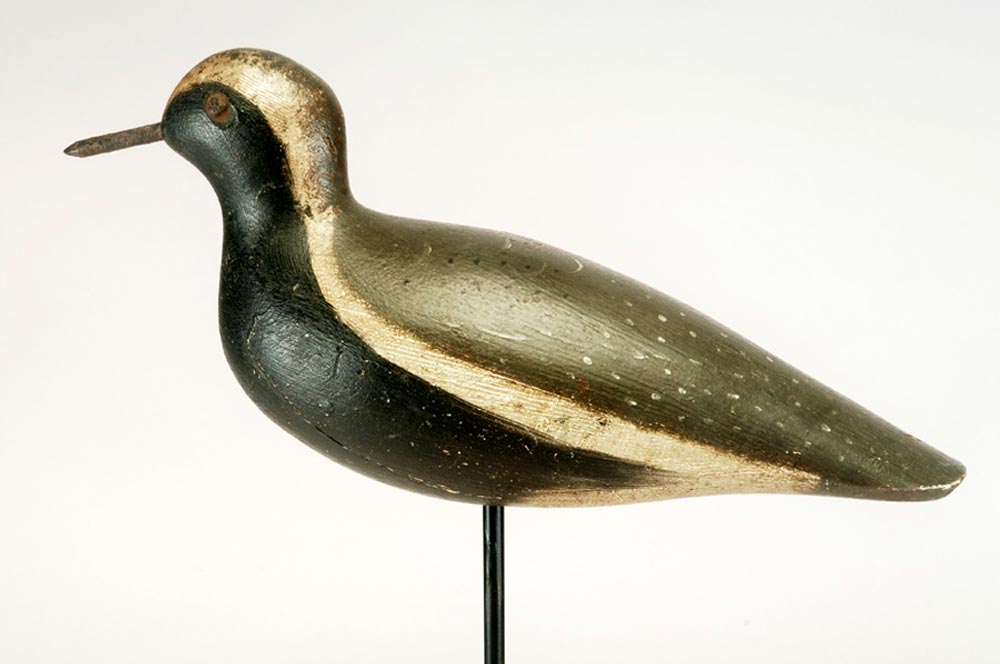A Beginner's Guide to Decoy Regions and Makers
Mason Decoys
The Mason Decoy Company (Detroit, MI; 1896-1924) was the most successful commercial maker of gunning decoys. They sold decoys worldwide. The decoys are cedar, carved on a pattern lathe in a readily identifiable, pleasing form, finished by hand, and painted in elaborate patterns by hand.
Mason Premier Mallard Hen | Mason Challenge Mallard Hen
The Premier Grade was Mason's finest. Decoys are generally hollow-carved and flat-bottomed, with highly detailed paint patterns.
The Challenge Grade was Mason's second best. Decoys are generally solid and round bottomed, with detailed paint patterns.
In 1905, Mason began to offer its Standard Grade decoys as its budget line.
Glasseye was its highest Standard Grade. Decoys are almost always solid and round bottomed, with workman-like pattern patterns.
Tackeye was its middle Standard Grade. Decoys are solid and round bottomed, with workman-like simplified paint patterns.
Painted Eye was its lowest Standard Grade. Decoys are smaller and solid, with little carving detail and rudimentary paint patterns. Painted Eye Masons were not popular with hunters and are hard to find.
Mason Glasseye Black Duck | Mason Tackeye Black Duck | Mason Painted Eye Black Duck
Mason Shorebirds
Mason also offered a full line of shorebird decoys in two grades: Glasseye and Tackeye. They are solid-bodied and most have iron nail bills. The earliest examples have wooden bills. Glasseye paint patterns were most elaborate.

Mason Glasseye Black-Bellied Plover

Mason Tackeye Black-Bellied Plover
Hunting of most shorebird species was banned by the Federal Migratory Waterfowl Act in 1918, so surviving examples are rare.

Mason Curlew
Regional Decoys
Our northern neighbors relied upon wooden decoys for waterfowl hunting just as we did in the States. Local Canadian carvers produced some of the finest decoys ever made. Decoys from Ontario tend to be hollow-carved with flat bottom boards. Quebec decoys are generally solid and tend to be ornately feather carved.

Warin Goose (Toronto)
The productive Chesapeake Bay hunting area produced vast quantities of working decoys. They are typically heavy, solid cedar with poured lead weights. Many highly-regarded decoy makers come from this area.

McGaw Black Duck (Maryland)

Hudson Brant (Virginia)
Decoys from the Illinois River, our central flyway, tend to be hollow-carved with the most elaborate paint patterns seen on any area's production.
Many decoys were made for hunting on both sides of New Jersey. Most are hollow-carved with simple paint patterns. Delaware River decoys are a bit more stylistically carved with more paint detail, perhaps because they were used in fresh water.

Perdew Mallard Pair (Illinois)

Shourds Canada Goose (New Jersey)
New England was our most productive waterfowling area and required a huge variety of decoy makers for commercial and individual hunters. Decoys tend to reflect the type of water where ducks are found. Maine decoys are usually solid and substantial. Massachusetts decoys are most delicate. Connecticut decoys are generally hollow.

Wilson Scoter (Maine)

Crowell Mallard (Massachusetts)
Other Factories
Some commercial decoy factories preceded the Mason Decoy Company and many followed. There is a similarity to the Mason form in most examples, and most of the early decoy factories hand-painted their production. Factory decoys in original paint are highly collectible today.

Dodge Slope Back Black-Bellied Pair

Pratt Blue-Winged Tail Drake

Benz Mallards
Other Types
Many decoy makers and whittlers made miniature replicas of waterfowl during the winter months when they were not hunting. Some are carved like tiny decoys; others are more decorative. Examples are highly sought after today.

Lincoln Miniature Bluebill Drake

Perdew Miniature Mallard Pair
Shorebird hunting for food was common in the 19th century from New England through North Carolina. Hunting of most shorebird species was banned by the Federal Migratory Waterfowl Act in 1918, so surviving examples of shorebird decoys are rare.

Burr Feeding Black-Bellied Plover (Massachusetts)

Boyd Yellowlegs (New Hampshire)